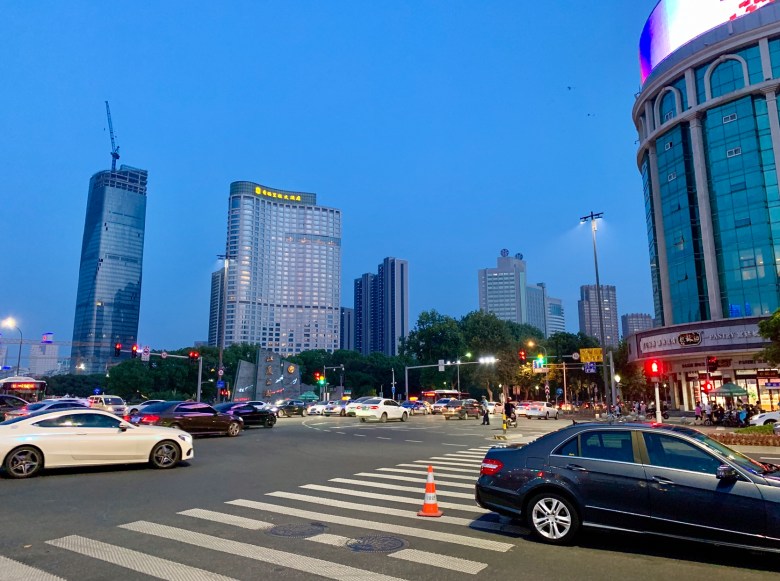 Asia Times
Asia Times
Sudden blackouts in industrial parks raise speculation that Beijing’s ban on Australian coal imports is starting to backfire

Office towers and shopping malls have gone dark again in Shanghai. Companies are asking their employees to work from home. The festive season’s lights are mostly turned off as the city’s usual holiday vibe is largely muted.
These dark sights are reminiscent of the lockdowns seen in February and March, when coronavirus-containing measures brought China to a halt. But this time, the lights-out closures spreading across the country are caused by a lack of power, not the pandemic.
Many small and medium businesses in the eastern Zhejiang province have reverted to work-from-home arrangements after local governments there cut off power to prioritize residential users.
China Business News reported that factories in the industrialized coastal province had since last week started to release employees early in the afternoon and asked some of them to work from home.
There have been complaints about sudden blackouts in industrial parks as factory owners realize that their locations have been chosen in the government’s new emergency plan for “electricity rationing and staggered supply.”
An order about energy conservation and power cuts was issued so hastily by Zhejiang’s provincial government this week that local cadres could not prepare notices for affected businesses before implementing it.
The order noted that all measures would lapse on December 31 if no new directives were issued by the provincial authorities. Backup power systems and diesel generators are said to be in short supply in Zhejiang again, similar to the province’s power crisis in the early 2000s.
Manufacturers and exporters are scrambling to find alternative power supplies to keep production lines running as overseas orders pile up. Exports from the economic powerhouse, whose GDP is on a par with those of Spain and Turkey, have bounced well above pre-Covid-19 levels, with October’s exports up 20% year-on-year.
Jiangsu, Henan, Hubei, Hunan, Jiangxi and Inner Mongolia are also grappling with power supply issues and have reportedly told their power producers to ensure ample supply to local clients before feeding the state grid.

China News Service quoted Hunan officials as saying that the daily electricity shortfall of the central province of 70 million residents fluctuates between 10 and 20 million kilowatt-hours.
Asia Times reported on December 16 that an emerging power crunch was forcing Shanghai and other major cities to switch off outdoor lighting as well as air-conditioning in malls, libraries and government buildings. Apparently, the power saved so far has failed to make up for the shortfall and the manufacturing sector is starting to feel the impact.
An official with Shanghai’s Industry and Information Technology Commission who requested anonymity told Asia Times that the city was still assessing how much the power shortage would eat into its GDP growth and industrial output after growth recovered back to positive territory in the third quarter.
He said Shanghai and other better-off provinces such as Zhejiang, Jiangsu and Guangdong would normally see a spike in manufacturing in the final quarter but widespread power cuts would deal a blow to the recovery and momentum. Cadres, the source said, had pinned hopes on the year-end “bumper quarter” to boost output.
That said, residents in Shanghai, while wondering what is behind the apparent power shortage, have praised the government’s bid to guarantee supply to households. The official Jiefang Daily noted that people’s livelihoods mattered more than the frivolity of chasing GDP growth targets.

So far it appears that the Communist Party’s propaganda department has not ordered a news blackout as the power shortage shuts plants across the country.
Extensive coverage by Chinese state media this week has piled more pressure on agencies in charge of power generation and security. On Friday, the National Development and Reform Commission vowed in a Xinhua circular that power cuts would not affect residential users and that the nation’s overall power generation remained stable.
Still, many are unconvinced by official reports that blame steep temperature drops across large swathes of China for the power crunch.
The Economic Observer newspaper reported that China’s hydropower plants have fed 21.7 billion fewer kilowatt-hours on to the state grid so far this month due to the dry season, but thermal power generation had also been losing steam due to thermal coal and natural gas undersupplies.
The retail price of thermal coal from the resource-rich Shanxi province has surged to 663 yuan per tonne this week, a two-year high, while the LNG net price for power producers hit 7,800 per tonne.
Yu’an, a popular financial analysis blog on WeChat updated by former Xinhua reporters, revealed that Beijing’s Australian coal ban had also left many power producers in limbo.
“Imports from Russia and Indonesia are still on their way to China.”
It also added that more than 80 Australian vessels with coal had been “held up” off Chinese ports. These hold about 8.8 million tons but despite reports about individual ports granting entry to some ships, most of them still sit at sea waiting for a U-turn from Beijing on its coal ban.






















